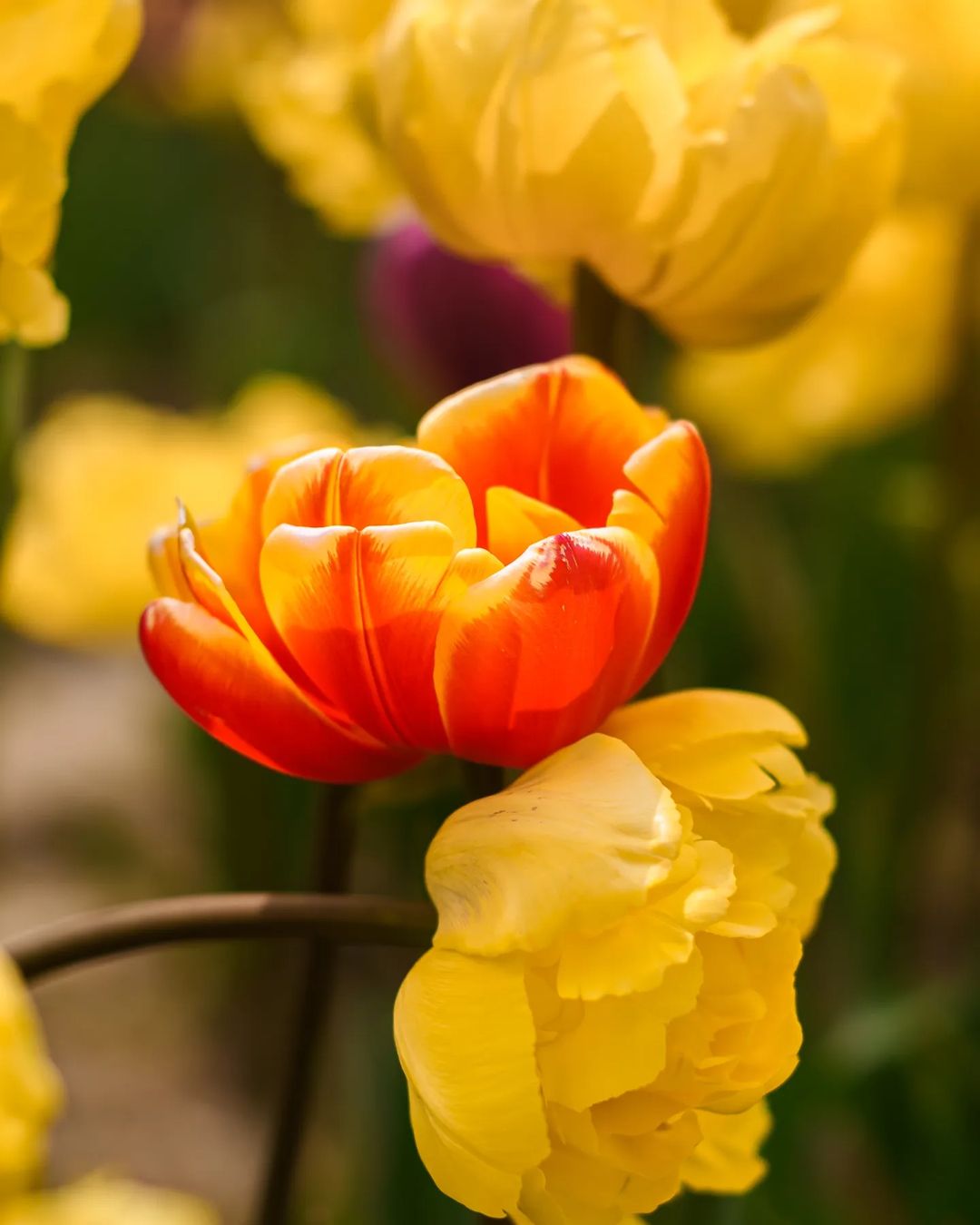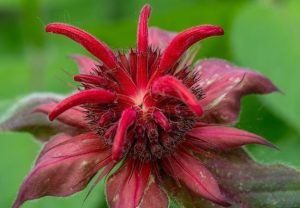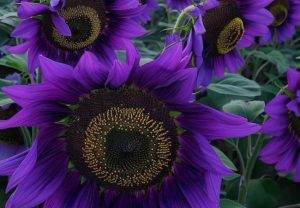Discover how to plant and care for red and yellow tulips. Learn tips for growing these vibrant flowers and how to create stunning displays in your garden or home.
Red and yellow tulips are beloved for their bold colors and elegant shapes. These spring-blooming flowers can add a vibrant touch to any garden or indoor space. In this guide, we’ll explore how to plant, grow, and enjoy these beautiful tulips.
Here’s a comprehensive overview of tulips:
| Aspect | Details |
|---|---|
| Botanical Name | Tulipa spp. |
| Common Name | Tulip |
| Plant Zone | USDA Zones 3-8 |
| Sun Exposure | Full sun to partial shade |
| Soil Type | Well-draining, sandy or loamy soil; prefers slightly acidic to neutral soil |
| Watering | Regular watering during growth; avoid waterlogging; water well after planting and during dry periods |
| Growth Habit | Upright stems with a single flower per stem; leaves are lance-shaped and basal |
| Height/Spread | Height: 6-18 inches (15-45 cm); Spread: 6-12 inches (15-30 cm) |
| Special Features | Known for their vibrant, varied colors and shapes. Tulips are popular spring perennials and come in many varieties, including early, mid-season, and late-blooming types. They typically bloom in early to mid-spring and are often used in garden beds, containers, and as cut flowers. |
Understanding Red and Yellow Tulips

Before we dive into planting and care, let’s learn about these colorful flowers:
- Tulips belong to the Liliaceae family
- They typically bloom in spring
- Red tulips often symbolize love and passion
- Yellow tulips can represent cheerfulness and hope
Tulips come in many varieties, each with unique characteristics.
When to Plant Red and Yellow Tulips
Timing is crucial for successful tulip growth:
- Plant bulbs in fall, about 6-8 weeks before the ground freezes
- In most regions, this means planting in September or October
- Tulips need a period of cold dormancy to bloom in spring
Choosing the Right Location
Tulips thrive in specific conditions:
- Sunlight: Full sun to partial shade
- Soil: Well-draining, fertile soil
- pH: Slightly acidic to neutral (6.0 to 7.0)
- Protection from strong winds
How to Plant Red and Yellow Tulips
Follow these steps for successful planting:
- Prepare the soil:
- Loosen soil to a depth of 12-15 inches
- Mix in compost or well-rotted manure
- Plant the bulbs:
- Dig holes 4-6 inches deep
- Space bulbs 4-6 inches apart
- Place bulbs pointed end up
- Cover and water:
- Fill holes with soil
- Water thoroughly after planting
- Add mulch:
- Apply 2-3 inches of mulch to protect bulbs
Caring for Your Tulips
Proper care ensures healthy growth and vibrant blooms:
Watering
- Water well after planting
- In spring, water when soil feels dry
- Avoid overwatering, which can cause bulb rot
Fertilizing
- Apply a balanced fertilizer in early spring
- Avoid high-nitrogen fertilizers, which promote leaf growth over flowers
Pest and Disease Control
Watch for common issues:
- Bulb rot: Ensure good drainage
- Aphids: Spray with insecticidal soap
- Deer and rodents: Use protective netting or repellents
After-Bloom Care
Proper care after blooming helps bulbs store energy for next year:
- Deadhead spent flowers
- Allow leaves to yellow and die back naturally
- Once foliage is brown, cut it off at ground level
- Dig up bulbs if desired, store in a cool, dry place
Creating Stunning Displays
Red and yellow tulips offer endless possibilities for beautiful arrangements:
In the Garden
- Mass plantings:
- Create bold blocks of color
- Plant in groups of 10-15 bulbs
- Companion planting:
- Pair with spring-flowering bulbs like daffodils or hyacinths
- Plant with perennials for extended color
- Layered planting:
- Plant bulbs at different depths for a longer blooming period
- Combine early, mid, and late-season tulips
Cut Flowers
Red and yellow tulips make stunning cut flower arrangements:
- Cut stems when buds are colored but not fully open
- Remove leaves that would be below water level
- Place in cool water with floral preservative
- Change water every 2-3 days
- Keep away from direct sunlight and heat sources
Forcing Tulips Indoors
Enjoy tulips indoors with these steps:
- Chill bulbs for 12-16 weeks at 40-45°F (4-7°C)
- Plant in pots with well-draining soil
- Water and place in a cool, dark location
- Move to a warm, sunny spot when shoots appear
- Enjoy blooms in 2-3 weeks
Popular Red and Yellow Tulip Varieties
Explore these stunning varieties:
Red Tulips
- ‘Apeldoorn’: Classic red Darwin hybrid
- ‘Couleur Cardinal’: Early-blooming with deep red petals
- ‘Red Emperor’: Large, vibrant red flowers
Yellow Tulips
- ‘Yellow Emperor’: Bright yellow with slightly pointed petals
- ‘Big Smile’: Cheerful lemon-yellow blooms
- ‘Golden Apeldoorn’: Rich golden-yellow Darwin hybrid
Red and Yellow Bicolor Tulips
- ‘Keizerskroon’: Red petals with yellow edges
- ‘Flair’: Yellow petals with red streaks
- ‘Mickey Mouse’: Red petals with yellow base
Troubleshooting Common Issues
Even with proper care, issues can arise:
- Blind tulips (no flowers):
- Cause: Planting too shallow or lack of nutrients
- Solution: Plant at proper depth, fertilize in spring
- Short stems:
- Cause: Insufficient chilling period
- Solution: Ensure bulbs experience adequate cold period
- Tulips not returning:
- Cause: Some varieties are not perennial in all climates
- Solution: Treat as annuals or dig up and store bulbs
Red and yellow tulips bring vibrant color and elegance to any garden or indoor space. By following these planting and care tips, you can enjoy stunning tulip displays year after year. Remember, tulips are relatively low-maintenance once established, making them perfect for both novice and experienced gardeners.
Whether you’re creating a bold garden display, crafting beautiful cut flower arrangements, or forcing bulbs for indoor enjoyment, red and yellow tulips offer endless possibilities. Their cheerful colors and graceful forms are sure to brighten your spring and bring joy to your home and garden.
With proper planning and care, you can look forward to a spectacular show of red and yellow tulips each spring. Happy planting!



